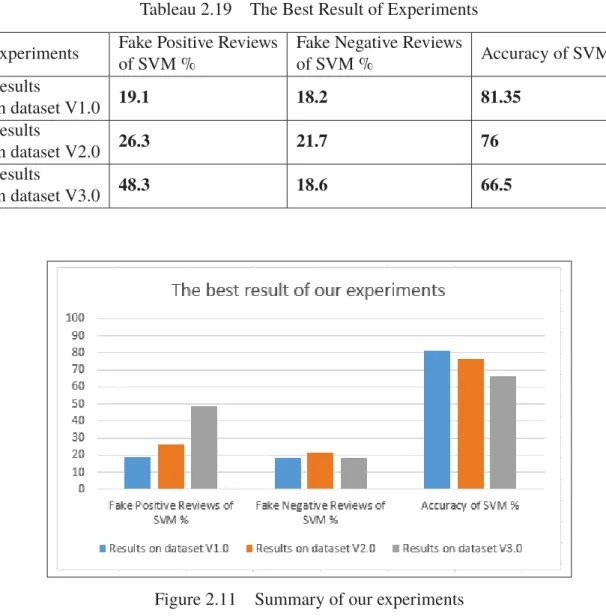2020 — Approches basées sur l'analyse des sentiments et les techniques d'apprentissage supervisé pour des systèmes de réputation robustes dans l'environnement du commerce électronique
Texte intégral
Figure




Documents relatifs
Abstract—In this article we study the use of the Support Vector Machine technique to estimate the probability of the reception of a given transmission in a Vehicular Ad hoc
They are SVM Venn Machine with homogeneous intervals (VM-SVM-HI) generalized from the binary-only version of [10] together with our alternative method SVM Venn Machine with
In this paper, inspired by Progressive Visual Analytics [30], we introduce a progressive k-d tree for approximate k-nearest neighbor algorithm that can keep the latency for
- car elle est simple, rapide et fonctionne pour une variable de sortie non binaire, et des variables d’entrées de type quelconque.. - elle permet de traiter des données de
Various data mining algorithms like Naive Bayes, Decision Tree, Neural Network, Support Vector, Logistic Regression, Machine(SVM), k-Nearest Neighbour,
Here we use a Support vector machines to build a machine learning model for the ECG dataset, using a portion of the data (80%) for training and the rest for testing the model
During our research we investigated the most popular supervised machine learning (Naïve Bayes, Naïve Bayes Multinomial, Support Vector Machine) and similarity-based
Comparison between the proposed LNS evidential k-NN and the Den÷ux's evidential k -NN according to leaves, barks and combined leaves and barks accuracy species recognition problem





